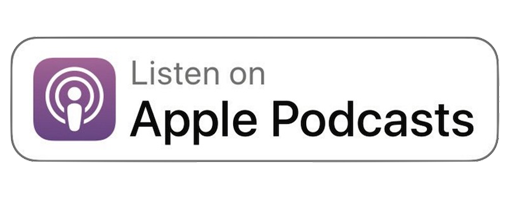Speak Clear English - Enroll Today
EPISÓDIO DE HOJE:
22 Alternativas para
“How are you?” em inglês
Há um milhão de pessoas para dizer “How are you?” em inglês. Ok, talvez não um milhão, mas podemos pensar em 22. Hoje vamos falar sobre 22 alternativas para “Como vai você?” em inglês. Saber como usar uma variedade de saudações em inglês aumentará o nível do seu inglês e o ajudará a soar mais como um falante fluente em inglês.
Eu uso cada uma dessas saudações semanalmente. Eu uso diferentes em diferentes cenários e tento variar a forma como saúdo as pessoas, porque isso faz parte do crescimento de uma amizade. Alguns deles são mais formais (“How have you been?” e “How are you doing?”, E alguns são menos formais (i.e. What’s good? and “What’s up?”) Eu recomendaria tentar essas frases na próxima vez que você quero saber como alguém é. Pratique essas frases constantemente! Deixe sugestões de frases nos comentários ou conte-nos sobre termos que você aprendeu recentemente. Se você tiver alguma dúvida sobre o conteúdo apresentado aqui, pode entrar em contato conosco nos comentários e no Instagram @studyenglishwithandrea:
Lembre-se de que a maioria dos falantes de inglês responde com “good” ou “fine” ao falar sobre como eles são. Você normalmente não compartilharia tudo o que está errado em sua vida quando alguém faz essas perguntas. Eles são usados principalmente como uma forma de se envolver em uma “small talk”.
Aqui estão eles. 22 alternativas para “How are you?”, Junto com as respostas que você normalmente diria.
Alternatives to “How are you?”
1) How are you doing?
A: Doing good. How about yourself?
2) What’s up?
A: Not much. How are you doing?
3) What’s new?
A: Not much. I’ve been… (details about your life)
4) How’s it going?
A: Going good. How about you? What have you been up to?
5) How’s your day going?
A: Going good. How about you?
6) How’s your week been?
A: My week has been (good, busy, crazy, etc…)
7) How have you been lately?
A: I’ve been doing well. (Details about your life).
8) How’s everything?
A: Everything is good. How about you?
9) You alright?
A: Yeah, I’m good. How are you doing?
10) You okay?
A: Yeah, doing well. How about you?
11) You doing okay?
A: Doing good. (details about your life)
12) How’s life?
A: Life is good. (details about your life)
13) How have you been?
A: I’ve been good. I’ve been… (details about your life)
14) How’s everything in your world?
A: Everything is good. How about you?
15) What have you been up to lately?
A: Not much. I’ve been… (details about your life)
16) What’s good?
A: Not much. How about you?
17) How are you holding up?
A: I’m good. How about you?
18) How are things?
A: Things are good. How about you?
19) How have you been since I last saw you?
A: Not much. I’ve been… (details about your life)
20) How’s life treating you?
A: It’s been good. How about you?
21) How are things in your neck of the woods?
A: They’re good. How about you?
22) What have you been up to?
A: Not much…(then give more details about your life, starting with “I’ve been…”)
Em que contexto você aplicaria essas frases ?! Quais você já conhecia? Adoraríamos saber mais sobre isso!
Agora que você aprendeu mais dicas sobre o idioma que você está estudando, é hora de melhorar seu inglês!
Clique em um dos links a seguir para começar a falar um inglês mais claro!
1) Clear English Pronunciation Video Course
2) English Vocabulary – Audio Files & PDF – TOEFL & IELTS
3) Idioms in Conversation
4) Jumpstart Your English Audiobook + eBook
Siga-nos no Youtube e no Instagram:
@studyenglishwithandrea – Postagens diárias de inglês, dicas e vocabulário!
@citizenshiptest – Para quem quer estudar para o Teste de Cidadania Americana.
Fontes:
https://www.wizard.com.br/idiomas/as-frases-em-ingles-mais-usadas-no-nosso-cotidiano/
https://www.englishspeak.com/pt/english-phrases
https://www.aluralingua.com.br/artigos/principais-frases-usadas-no-cotidiano-em-ingles
Até a próxima, Feliz Aprendizado!
Speak Clear English - Enroll Today

Jhessika Nascimento
Director of International Partnerships
Jhessika Nascimento is the Director of International Partnerships for Study With Andrea and lives in Brasilia, Brazil.
Jhessika is a bilingual teacher of English and Portuguese, studying for a Master's Degree in Strategic Management in Information Technologies at the Universidad Internacional Iberoamericana.
Graduation in Letters - Portuguese and English.
Postgraduate in Teaching in Higher Education.
Postgraduate in Risk Management and Cybersecurity.
Postgraduate Executive MBA in Process Management BPM-CBOK.
Postgraduate in Translation and Proofreading of Texts in English.
The following is a TOEFL Reading practice test to help you prepare for the Reading section of the TOEFL test.
Instructions: Read the sample passage below and then answer the questions that follow.
TOEFL Reading Practice Passage
Gorillas are ground-dwelling, predominantly herbivorous apes that inhabit the forest of central Sub-Saharan Africa. The genus Gorilla is divided into two species: the eastern gorillas and the western gorillas (both critically endangered), and either four or five subspecies. They are the largest living primates. The DNA of gorillas is highly similar to that of humans, from 95 to 99% depending on what is included, and they are the next closest living relatives to humans after the chimpanzees and bonobos.
Gorillas' natural habitats cover tropical or subtropical forest in Sub-Saharan Africa. Although their range covers a small percentage of Sub-Saharan Africa, gorillas cover a wide range of elevations. The mountain gorilla inhabits the Albertine Rift montane cloud forests of the Virunga Volcanoes, ranging in altitude from 2,200 to 4,300 metres (7,200 to 14,100 ft). Lowland gorillas live in dense forests and lowland swamps and marshes as low as sea level, with western lowland gorillas living in Central West African countries and eastern lowland gorillas living in the Democratic Republic of the Congo near its border with Rwanda.
(#1) Gorillas move around by knuckle-walking, although they sometimes walk upright for short distances, typically while carrying food or in defensive situations. (#2) A 2018 study investigating the hand posture of 77 mountain gorillas at Bwindi Impenetrable National Park (8% of the population) found that knuckle walking was done only 60% of the time, and they also supported their weight on their fists, the backs of their hands/feet, and on their palms/soles (with the digits flexed). (#3) Studies of gorilla handedness have yielded varying results, with some arguing for no preference for either hand, and others right-hand dominance for the general population. (#4)
The eastern gorilla is more darkly colored than the western gorilla, with the mountain gorilla being the darkest of all. The mountain gorilla also has the thickest hair. The western lowland gorilla can be brown or grayish with a reddish forehead. In addition, gorillas that live in lowland forest are more slender and agile than the more bulky mountain gorillas. The eastern gorilla also has a longer face and broader chest than the western gorilla. Like humans, gorillas have individual fingerprints. Their eye color is dark brown, framed by a black ring around the iris. Gorilla facial structure is described as mandibular prognathism, that is, the mandible protrudes farther out than the maxilla. Adult males also have a prominent sagittal crest.
A gorilla's lifespan is normally between 35 and 40 years, although zoo gorillas may live for 50 years or more. Colo, a female western gorilla at the Columbus Zoo and Aquarium, was the oldest known gorilla at 60 years of age when she died on 17 January 2017.
Questions
1. According to the passage, gorillas can live in
a. a variety of altitudes.
b. several different countries in Africa.
c. thick forests.
d. lowland forests only.
2. All of the following is true about gorillas EXCEPT
a. they primarily eat smaller animals.
b. they live in a forest habitat.
c. their genetics are similar to humans.
d. their diet consists of vegetation.
3. Look at the word predominantly in paragraph 1. The word predominantly in this passage refers to
a. impulsively
b. unfortunately
c. mainly
d. lastly
4. Look at the word inhabits in paragraph 2. The word inhabits in this passage refers to
a. lives in
b. protects
c. goes
d. works
5. The author implies that
a. most gorillas prefer using their left hand over their right.
b. gorillas rarely walk on their knuckles.
c. gorillas regularly walk upright for long distances.
d. studies haven't solidly proven which hand gorillas prefer using.
6. Why does the writer mention that the eastern gorilla also has a longer face and broader chest than the western gorilla?
a. To validate the importance a broad chest in western gorillas
b. To define the meaning of "broad"
c. To highlight a physical difference between types of gorillas
d. To demonstrate that most gorillas are identical in physical build
7. Which of the following statements is true for BOTH eastern and western gorillas.
a. Both eastern and western gorrilas are brown with red foreheads.
b. Both eastern and western gorrilas have unique fingerprints.
c. Both eastern and western gorrilas have thin hair.
d. Both eastern and western gorrilas have light brown eyes.
8. In Paragraph 3, look at the four numbers (#1, #2, #3, #4) that indicate where the following sentence would be added to the passage.
Such a range of hand postures was previously thought to have been used by only orangutans.
Where would the sentence best fit?
(View all the correct answers below.)
Great job! If you're ready to take your TOEFL preparation to the next level, go to StudyWithAndrea.com/TOEFL.
Answers: 1. d 2. a 3. c 4. a 5. d 6. c 7. b 8. #3
Click on one of the following links to start speaking clearer English!
1) TOEFL MASTER CLASS
2) free mini-course "punctuation mistakes to avoid"
3) Clear English Pronunciation Video Course
4) English Vocabulary - Audio Files & PDF - TOEFL & IELTS
About Andrea
Andrea Giordano is the founder of StudyWithAndrea.com and has taught more than 1,000,000 students from 180 countries. Andrea holds a Master of Education (TESOL) from Shenandoah University, and is the former Executive Director of TESOL and ESL programs at Campbellsville University. Andrea is a proven leader in online English teaching and is driven by her passion to help you speak English clearly.





